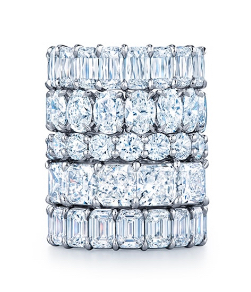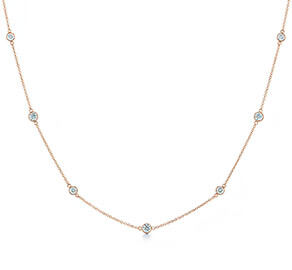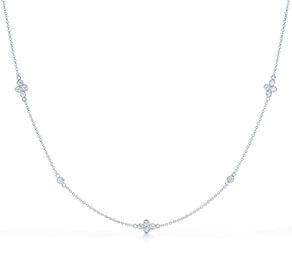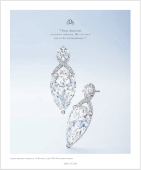A FEW OF OUR FAVORITES
CELEBRITIES WHO HAVE SAID YES TO THE EMERALD CUT

Jennifer Lopez
A stunning large emerald cut diamond ring that made its debut on Instagram

Elizabeth Taylor
Formerly called the Krupp diamond, this emerald cut of more than 30 carats was renamed the Elizabeth Taylor Diamond in 2011.

Amal Clooney
A sleek, simply set emerald cut diamond ring.
THE FOUR Cs AND MORE
GOOD TO KNOW
- The marquise is also sometimes called navette, which is French for “small ship.”
- Marquise cut diamond rings have waxed and waned in popularity throughout the decades but are once again in vogue and are a favorite among today’s tastemakers. A marquise diamond that’s side-set across the finger offers a particularly high-fashion look.
- Marquise diamonds feature a faceting pattern similar to that of round brilliant diamonds and have the same level of brilliance and sparkle.
- The overall form can range from wide and short to narrow and long depending on the particular diamond.
CARAT WEIGHT
- Marquise diamonds, perhaps more than any other shape, appear large for their carat weight because of their elongated silhouette.
- Narrow and long marquise cut stones have a slightly greater size appearance than wide and short marquise cuts. This is due to both the length and the shallower depth of a longer stone.
COLOR
GIA COLOR SCALE
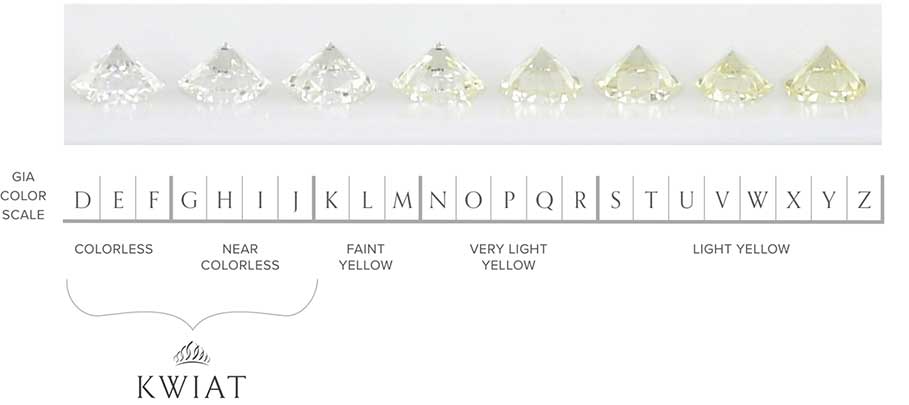
- Marquise shape diamonds appear colorless through the H color grade range. While some marquise stones in the I range will appear colorless, others may exhibit a yellowish tint when viewed from face-up. At the J color grade and below, most marquise shape diamonds display visible tinting.
- At Kwiat, we do not offer stones that show obvious color flaws in respect to their color grades.
CLARITY
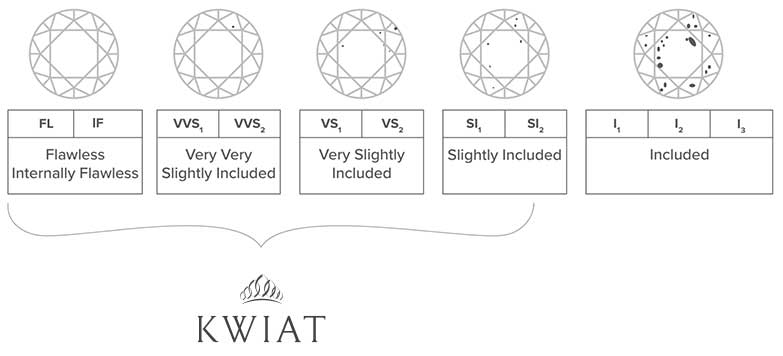
- The sparkle of a marquise cut diamond’s brilliant faceting pattern helps to mask internal inclusions.
- Kwiat’s recommend clarity range for a marquise diamond runs between VS1 and SI1, as long as the SI1 appears clean and clear to the naked eye. Infrequently, SI2 marquise shaped diamonds can appear clear to the eye, though it is not typical.
- Our diamonds are the best of their respective clarity grade, and Kwiat’s SI1 and SI2 marquise cut diamonds do not show inclusions to the naked eye.
CUT
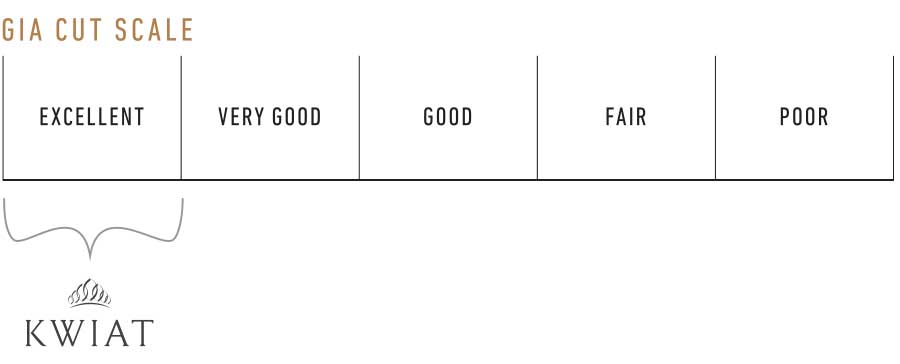
- Cut is the most important qualitative element when selecting a marquise cut engagement ring.
- A well-cut marquise cut diamond has a pleasing form and shows its size properly. It is bright throughout with very subtle differences in the brilliance patterns at the center and ends of the stone.
- A poorly cut marquise cut diamond can exhibit a pronounced bow tie effect, which occurs in diamonds with elongated shapes. This visual phenomenon creates darkness across the center of the diamond, fanning out from the mid-point to the edges. A pronounced bow tie is unattractive, appearing as dark interruptions in the faceting pattern’s brilliance and consistency.
- The GIA report for a marquise cut diamond will typically read either “Marquise Brilliant” or “Modified Marquise Brilliant,” which indicates subtle changes to the faceting pattern. These changes are often designed to enhance the diamond and are not considered problematic. The GIA does not assign Cut grades for marquise diamonds, which is why trusted professional guidance is so important.
- At Kwiat, all of our marquise shape diamonds are beautifully cut to maximize beauty and size appearance, and to minimize any bow tie effect.
RATIO
- A diamond’s ratio is its length divided by its width. The higher the ratio, the more elongated the diamond will appear. The ratio range for marquise shape diamonds runs between 1:2 and 2:2, a much wider range than most other shapes.
- We recommend a ratio between 1:1.7 and 1:2 for classically cut marquise diamonds. Those with a length to width ratio of less than 1:1.7 may seem short and stubby to the eye, while those with a length to width ratio of more than 1:2 may seem too long and appear exceedingly thin.
- Marquise diamonds outside the recommended ratio range, though not classically shaped, can still be attractive. In this case, personal preference is the important determining factor.
DEPTH PERCENTAGE
- There is not a rigid set of depth percentage parameters for marquise shape diamonds. Our recommendation ranges from 50 to 60 percent in order to maximize brilliance and display size properly. The more elongated the stone, the higher its depth percentage will be.
- Marquise shape diamonds with percentages below the recommended range may seem glassy and lose their brilliance, while those with percentages above the recommended range look small for their size and carry too much weight on the underside of the stone.
TABLE PERCENTAGE
- There is not a rigid set of table percentage parameters for marquise diamonds, and a wide range is accepted for this shape. Most have table percentages between 55 percent and 63 percent.
- Marquise shape diamonds with table percentages below the recommended range can appear small for their size. They may also display unattractive reflections in the center of the diamond. Those with table percentages above the recommended range often appear flat and glassy, resulting in less fire reflected from the crown.










